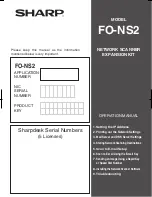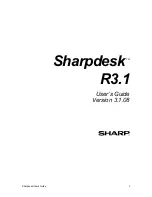
Deployment Solution
56
Setting Up the Altiris PXE Server
Part 1: DHCP Request and PXE Discovery
Request and Receive an IP Address
Initially, the boot agent directs the execution of normal DHCP operations by
broadcasting a DHCPDISCOVER packet (255.255.255.255) to port 67 on its local
physical subnet to discover a DHCP server.
Any available DHCP servers respond with a broadcast DHCPOFFER packet indicating
their server IP.
When the client has chosen a target DHCP server, it broadcasts a DHCPREQUEST packet
that includes its MAC address and the IP address of the selected DHCP server. The
DHCPREQUEST also contains option 60 to identify the client as a PXE client.
PXE Option 60
DHCP lets clients to receive options from the DHCP server indicating various services
that are available on the network. A number of standard and custom options are
available that can convey a vast amount of information to DHCP clients. Option 60 deals
specifically with PXE related services. Both PXE clients and servers use option 60 to
convey specific information about the PXE services they need or are providing.
Contacting the Altiris PXE Server
All DHCP servers examine the DHCPREQUEST packet. If the request is intended for a
different server, the IP address they offered is reclaimed. The DHCP server providing the
accepted offer supplies a DHCPACK packet to the client to acknowledge the client’s
receipt of its IP.
During this process, the Altiris PXE Server monitors the wire for DHCPREQUEST packets
with an option 60 (PXE client). When a packet is recognized, the client’s MAC address is
used to find any pending automation work in Deployment Server. If no automation work
is required, the Altiris PXE Server does not respond to the client and it boots normally.
If there is work to do, the Altiris PXE Server responds with its address using a DHCPACK
with option 60.
At this point, the client has received a DHCPACK containing an IP address, and a
DHCPACK with option 60 containing an Altiris PXE Server. If the Altiris PXE Server is
located on the same server as DHCP, both are contained in the same DHCPACK packet.
Part 2: PXE Bootstrap
The client is ready to contact the Altiris PXE Server for boot files. After this request,
clients are provided with a boot menu containing all boot options that the Altiris PXE
Server can provide. Most of the time, the correct boot option has already been selected
by the Deployment Server, so this is transfered to the client.
After the selection is made, the client requests the necessary boot files using MTFTP.
This consists of a .0 and a .1 file.
The .0 file functions as a bootstrap loader. It creates a RAM disk and manipulates the
BIOS interrupt vectors, interrupt structures and hardware information tables to make
the RAM disk function exactly like a typical floppy disk. This file copies the .1 file byte by
byte into the newly created RAM disk.
Содержание ALTIRIS DEPLOYMENT SOLUTION 6.9 SP4 - V1.0
Страница 1: ...Altiris Deployment Solution 6 9 SP4 from Symantec Admin Guide ...
Страница 40: ...Deployment Solution 40 What is Automation z Which Automation Operating System Should I Use page 44 ...
Страница 144: ...Altiris Deployment Solution from Symantec User s Guide 144 ...
Страница 371: ...Altiris Deployment Solution from Symantec User s Guide 371 ...
















































